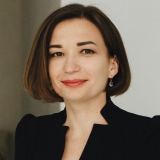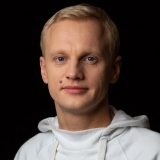National culture – a roadmap forward or an enternal trap: what the world is dealing with in this war with Russia
Numerous Western analysts have openly admitted not having considered the ‘logic’ Russia was following for years before its unprovoked and unjust war against Ukraine. Moreover, the democratic world still attempts to analyze Russia’s actions from the cognitive and cultural paradigm which is radically different from that of this country’s mentality. The said two paradigms are as different as the world of Alice from Lewis Carroll’s famous novel and the ‘through the looking glass’ world, in which she has found herself one day.
Cross-cultural studies, underpinned by psychology and sociology, provide a framework, parsimonious enough to better understand the actions of Russian rulers and people. Cross-cultural science studies the mechanisms of interaction between national cultures and institutions, which regulate behavior and decision-making in respective countries.
Identical institutions will not only operate differently in different countries, but will diverge in structure, legitimacy, and level of influence.
Using Russia as an example, further in the article the impact of national culture on the country’s institutions will be analyzed, along with the subsequent behavioral patterns.
Culture and institutions: chicken or the egg?
Every country, and separate regions of it, possesses peculiar values of national culture, which have been forming for a long time under the influence of geographical (landscape, climate, location), historical (ruling regimes, wars), social (societal stratification and interaction), and other factors. Researchers postulate that the formation of such values begins in the family to further be completed through regular societal interactions and are passed from generation to generation. For instance, cross-cultural studies show that the level of collectivism[2] correlates with the complexity of conditions, in which the country has been developing. The more severe the conditions, the more collectivist and mutually dependent the society is and the higher the impact of the group and the significance of belonging to the group in it.
National culture manifests on the following three levels:
(1) underlying assumptions (mental templates, which the society replicates ‘by default’) – change during ~100 years;
(2) values and beliefs (key principles that ‘signal’ tow to interact with one’s environment) – change during ~10 years;
(3) norms (societal expectations of desired and undesired behavior) – change during ~2-3 years.
What’s important to understand is that national culture changes only if the underlying assumptions do. Temporary shifts in behavior or imitating other beliefs and values (even under pressure) does not cause deep changes in the national culture.
For instance, one of the underlying assumptions of Russia’s culture is the mutual distrust between the elites and the people, bordering on hate. For this reason, Russia is one of the most atomized (divided, incongruent) societies in the world, where an individual has no agency to exercise systematic impact and does not believe in their ability to have one. Basically, Russia is a large geographic territory, populated by people with too weak a connection between them to unify them sufficiently for causing anything resembling a mass movement of any kind. In such conditions, among the key beliefs and values in Russia are: pessimism / passivity (‘what can I do?’), messianism (‘people ‘upstairs’ know better what to do and where to go), and aggression (‘coercing instead of convincing’). Consequently, the expected norms in Russian culture include silent dissent, tolerance of inappropriate behavior as highest manifestation of loyalty, and leaders’ expectation of blind faith and obedience (instead of informed participation) from followers. This is, certainly, not an exhaustive list of underlying assumptions, beliefs / values, and norms of Russian culture.
Given the longevity of the underlying assumptions, research shows that it’s the national culture that primarily shapes the country’s institutions, which scholars define as ‘mechanisms through which societal choice is defined and made, political influence is distributed, and behavior regularity is ensured’. Institutions can be formal (rules, laws, and their enforcement mechanisms) and informal (self-regulation, codes of ethics and conduct, conventions, deeply embedded social norms). However, when the institutions have developed and matured, they begin ‘steering’ national culture as the riverbed ‘steers’ the river, thus, hindering rapid culture change. Therefore, timely institutional evolution is critical for the country to avoid getting ‘stuck in national culture silo’ and to end up with the culture, irrelevant to the current interactions in society and between societies.
For instance, Russian government institutions may appear as modernized on the surface, but on a deeper level they are still gravitating towards the soviet traditions of governance, based on strict hierarchy, blind following of orders from ‘upstairs’, and myth-making via propaganda and re-writing of history. By the way, Russia is the only authoritarian country in the world that has had a short democracy-ish period, compared with the much longer period of authoritarian rule. Even if, hypothetically, Russia’s national institutions were magically replaced with the modern ones, with the ‘right’ people in them, until the society’s underlying assumptions shift, these institutions won’t be effective – the national culture will reject them as an ‘alien’ object. For this reason, even when consuming Western content, goods, and services, Russians still hold mentally ‘contrarian’ attitudes to the ‘despised West’.
Understanding Russia through cross-cultural analysis
There is a range of flagship national culture analysis and classification systems, among the most scholarly and empirically valid of which are Hofstede, GLOBE, Trompenaars, Lewis, Schwartz, Triandis, Hall. All these systems use longitudinal studies, surveys, and statistical analysis to determine the key ‘dimensions’ through which national cultures manifest in the key societal processes. The level and the character of these dimensions allows to understand why certain decision-making and behavioral logic is peculiar to some countries and not peculiar to the others. To avoid the deep ‘dive’ into the cross-cultural domain, further in the article the focus will be on the dimensions that are mentioned in all systems of classifying national cultures and serve as grounds for cross-cultural analysis, regardless of the system and its authors.
INDIVIDUALISM-COLLECTIVISM. This dimension shows the level of priority given in a society to interests of a group as a ‘monolith’ or individuals in that group. The more collectivist a society, the less encouraged and acceptable is ‘going against the current’ or expressing thoughts that contradict the majority’s ‘line of thinking’. Individual achievements in a collectivist society are less significant than the group ones and are not considered separately from those. Interestingly, a large part of the developed democracies is moderately or highly individualist: USA, UK, Germany, France, Netherlands, Switzerland, Estonia, Latvia, Lithuania, etc. While a soviet-time phrase ‘Ya [Я] is the last letter of the alphabet’ is a vivid illustration of collectivist thinking. Among the most collectivist cultures in the worlds are Mediterranean, Asian, Latin American, Arab, and Sub-Saharan African.
Russia is a highly collectivist society, in which belonging to a group that ‘legitimizes’ one as a society member is critical. As well as the ‘approval’ of one’s behavior by the ‘right’ and ‘respected’ people. In collectivist cultures the level of societal trust beyond family or friends’ circles is ultra-low. Consequently, the morals in such cultures are not ‘generalized’: one is encouraged to act responsibly and ethically in individualist societies towards everyone, while in collectivist ones – only towards one’s ‘in-group. The ‘out-group’ people do not deserve either fair treatment, or beneficial cooperation, or truthful information, or, in extreme cases – compassing and a right to life.
INDEPENDENCE-INTERDEPENDENCE. In independence-oriented cultures, individuals view themselves as separate from the ‘societal whole’ and social institutions encourage autonomy, self-expression, and self-direction in decision-making, life planning, and job search. Connections and acquaintances as a means of attaining the desired results in such cultures are viewed as corruption, while voicing unpopular thoughts is encouraged. Vivid examples of independence-oriented countries are USA and UK, but overall independence orientation is peculiar to the countries with working democracies and institutions, allowing individuals to use the system without the ‘lubricant’ of connections and acquaintances. In interdependence cultures, on the contrary, individuals view themselves as integrated in the complex and interwoven systems of societal connections and relations, without which the institutional systems do not work effectively. Consequently, without these ‘networks’, individuals in such societies are unable to plan their lives and obtain the desired results. Interdependence orientation is highly pronounced in Mediterranean, Latin American, Arab, Asia-Pacific, and South-East Asian countries. There, one maintains critically important relationships which serve as ‘proxy’ to use the institutional systems that are frequently dysfunctional if used directly. Naturally, in such cultures one does not express ‘radical’ thoughts and ‘sits out’ the difficult times until the stability of the ‘lubricating’ networks is re-established.
Russia is an interdependence-focused society – among historical reasons, due to the ineffectiveness of most its institutions that haven’t much evolved (on the level of underlying assumptions) since the soviet times. Since childhood, an average Russian is embedded in myriads of connections and acquaintances which not only provide for getting into the ‘right’ school / company / influential group but serve as ‘insurance’ when the need arises for ‘help’ or ‘a word of protection’ in a difficult situation. Naturally, Russians are incapable of creating mass movements of any kind, since that would ruin their systems of life-supporting connections, without which they would be facing the ineffective bureaucracies of their country’s institutions. They can complain, run away, ‘sit out’ the difficult times, complain, tolerate, rather than unite against anything that threatens them in any way.
ANALYTICAL-HOLISTIC THINKING. The type of thinking in a national culture defines the perception of visual content, as well attention breadth and focus of people in it. Historically and due to the specifics of institutional formation, analytical thinking has become predominant in Western Europe, North America, and Scandinavia, focused on the object, not the context. For instance, when a President of a country at war is speaking, the analytically oriented cultures analyze his / her words, facts and figures, compare what they know to what’s being said, and address the experts on matters beyond their expertise. In the rest of the world, holistic thinking is predominant – with focus on the context, not the object. In the same example with the speaking President, such cultures will be focused on the ‘hidden motives’ for speaking, previous actions and decisions, perception of ‘in-group’ and ‘out-group’ actors in this situation, and the embedded relations preceding the speech. Words alone for such cultures carry little meaning and without the ‘right context’ do not evoke trust.
Russia is a holistic thinking culture. Everything that’s said by Ukrainians or representatives of other countries involved in today’s situation, Russian rulers and people do not perceive through the lens of logic, facts, and figures. Their perception is guided by the considerations of ‘in-group’ or ‘out-group’, ‘respects / does not respect us’, ‘friend or enemy’, ‘cultured or primitive’. The combination of interdependence orientation with holistic thinking in Russian mentality produces the ‘allowance’ to not honor commitments, not disclose full and factual information, not fulfil obligations, and encroach on the territory and even life of those who are considered ‘out-group’, ‘enemies’, ‘not friendly’, ‘not worth existing’.
VERTICAL-HORIZONTAL ORIENTATION. This dimension measures how strongly national cultures gravitate towards status, influence, and dominance (vertical orientation) or to more egalitarian, dialog-based interaction (horizontal orientation). It also includes the level of tolerance towards some groups or individuals possessing exponentially more power than others in a society (power distance). Strongly horizontally-oriented cultures are concentrated in Scandinavia and Western Europe, moderately horizontally oriented – in USA and UK. The rest of the world is comprised of moderately or highly vertically oriented cultures, with Asian region (including Central and South-East Asia) leading in the world by this dimension. When combined with individualism or collectivism, the type of orientation in a culture steers the society either towards achievement (important to work better than others, doing good work, relying on oneself) or towards upholding decisions made by the referent group (important to not doubt and fulfill the decisions of the group I trust, rely on people relations with whom are important to me).
Russia is a vertically oriented culture with power distance indicators among the highest int the world. The modern Russians are not bothered by the decades of dictatorship, under which they’ve been living because they ‘traded’ freedom for the desired level of comfort. Combined with collectivism and interdependence orientation, vertical orientation in this country leads to the ‘automatic’ silent perception of diminishing personal freedoms and atrocities that are ‘too far away’, ‘somewhere over there’. It goes without saying that only silent approval / condoning of the dictatorial regime gives access to the ‘useful’ connections allowing to resolve important life problems and to get ahead in society. Another effect of such combination is the maniac obsession of those in power with ‘saving face’ and the illusion of ‘victorious victory’ at any cost.
TIGHTNESS-LOOSNESS OF SOCIAL NORMS. Social norms ‘signal’ the individuals in a society how acceptable or unacceptable certain daily behaviors are. Is it appropriate to smile to strangers (yes – in the USA, no – in Ukraine)? Should one apologize before causing others discomfort (yes – in Japan, no – in Germany)? If social norms are clearly (often – formally) defined, and the same behaviors across the country are considered deviant and unacceptable, it’s a culture with ‘tight’ norms. Among the world’s ‘tight’ cultures are China, Germany, France, Mexico, India, Japan, Singapore. If social norms in a country are flexible, informal, and may differ in various regions, it’s a country with ‘loose’ social norms. Among the world’s ‘loose’ cultures are Hungary, Brazil, Australia, Belgium, Israel, New Zealand, USA.
Russia – is a country with ‘loose’ social norms. Because of Russia’s size and the gaping cultural diversity, there simply cannot be similar social norms to unite them all. Consequently, the behavior frowned upon in one region or federal district will be perfectly acceptable in the other. Combined with collectivism, vertical and interdependence orientations, and holistic thinking, the ‘looseness’ of social norms in Russia allows its rulers to find large enough groups of population to support any decisions they make. And on the ‘sample’ of 140 million people, these ‘support groups’ of the country’s atrocious actions can be quantitatively large.
HIGH-LOW UNCERTAINTY AVOIDANCE. Ability and preparedness to tolerate future uncertainty and unpredictable change determines the society’s gravitation towards perceptions of control and ability to effectively function in fluid conditions. Interestingly, the countries united by other cultural dimensions frequently score differently on uncertainty avoidance. Particularly, in Western democracies high uncertainty avoidance is peculiar to France, Spain, and Italy (among others), and low – to USA, Canada, and UK (among others). Uncertainty avoidance in Asia, South Korea and Japan is high, while in Hong Kong, Singapore, and China it’s low.
Russia is among the world’s leaders in high uncertainty avoidance, which means low ability to function in rapidly changing conditions, further slowed down due to the interdependence, power distance, and vertical orientation. At the same time, on the level of top decision-makers, risk aversion is low (due to the systemically embedded lack of accountability), so doing something ‘for the heck of it’ or without logical calculations is the norm. The desire to control the future in Russia is ultra-high, while combined with the low trust to ‘out-groups’ and ‘enemies’ often makes dialogue based on logic and argumentation – impossible.
HIGH-LOW LONG-TERM ORIENTATION. This dimension shows how important it is in a culture to: ‘deal’ with the past to move on to the future; focus on the long-term goals; be able to adapt one’s views and traditions as demanded. This dimension also measures to what degree truth / non-truth and good / evil are fixed or situational in a culture. The higher the long-term orientation, the more situationally a culture approaches ethics and traditions, the more dependent the truth is on it being ‘beneficial’, the ‘greyer’ the divide between good and evil is – especially when a ‘greater goal’ is considered. The lower the uncertainty avoidance, the more important traditions and societal obligations’ longevity is, the clearer the divide between what’s appropriate and inappropriate, the clearer the distinction between truth and non-truth. However, this dimension alone is not parsimonious – what’s important is its combination with other cultural dimensions: individualism / collectivism, vertical / horizontal orientation, independence / interdependence orientation, tightness / looseness of social norms, and institutional effectiveness (especially formal). Other cultural dimensions ‘balance out’ long-term orientation when it’s high and ‘strengthen’ it when it’s low. Among the developed democracies, the lowest long-term orientation is demonstrated by USA, Australia, Canada, New Zealand, Poland, Denmark, Norway, Finland, Israel. Democracies with high long-term orientation include Switzerland, Germany, UK, Netherlands, France, Latvia, Estonia, Japan, South Korea.
Russia has among the highest indicators of long-term orientation in the world, which, combined with collectivism, interdependence, holistic thinking, vertical orientation, and loose social norms, produces an ‘explosive mix’ of legitimized substitution of truth with myths, re-writing of history with no retribution, justified failing to uphold any agreements considered non-beneficial at the moment, and condoning atrocities or inappropriate behaviors if they are committed for ‘greater good’ or ‘higher purpose’.
Conclusions and practical implications
‘Dimensions’ of national culture shape and define the institutional landscape of a country, which then regulates and encourages specific patterns of behavior, peculiar to this country’s society. Therefore, cross-cultural profiling of the key geopolitical players is no longer an academic exercise, but a practical necessity. Thus, the fundamental change in approach to dealing with Russia on the level of international relations, geopolitical and security considerations, has been long overdue. Especially critical such change is considering the ongoing unprovoked and unjust war Russia has launched against Ukraine. Cross-cultural analysis shows that Russia is incapable and has no intention to function as a democracy of Western format. Moreover, Russia considers Ukraine, which has proved with its citizens’ lives the adherence to the democratic vector, a country ‘not worth existing’. Therefore, Ukraine’s victory in this war is critical, without exaggeration, to all democratic world. And the more pragmatically Ukraine speaks about the threats of the Russian aggression to the rest of the world, the more systemic and actionable global resistance will be to this system of destruction, which Russia is trying to impose on the democratic world.
Marina Starodubska, Managing Partner, TLFRD Consultancy, Adjunct Professor, Kyiv-Mohyla Business School.






